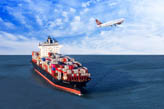Latest Developments in Air Freight Translation Services
In today’s globalized world, accurate and timely translation services for air freight are more critical than ever. With the increasing demand for international trade, understanding the latest developments in air freight translation is essential for businesses to maintain their competitive edge. This article explores the current trends and advancements in air freight translation services, focusing on the most relevant ports and technologies.
One of the most significant aspects of air freight translation is the selection of the right ports. Major international airports, such as Los Angeles International Airport and Singapore Changi Airport, are increasingly utilizing advanced technologies to enhance efficiency. These ports are equipped with state-of-the-art equipment, including automated systems and artificial intelligence, to ensure precise translations and accurate documentation. As a result, businesses can now rely on these ports to deliver high-quality translations that meet international standards.
Another key development in air freight translation is the growing emphasis on sustainability. Many airlines and logistics companies are now prioritizing eco-friendly practices, which often translates into better translation services. For instance, some companies are implementing carbon reduction strategies that require meticulous translations to ensure environmental compliance. This trend not only benefits the environment but also helps businesses maintain their reputation and customer trust.
In conclusion, the world of air freight translation is constantly evolving, with advancements in technology and sustainability playing a crucial role. Businesses that invest in the latest tools and services are better positioned to handle the challenges of global trade. By leveraging these developments, companies can ensure accurate, efficient, and sustainable translations, ultimately driving their success in the competitive international market.
